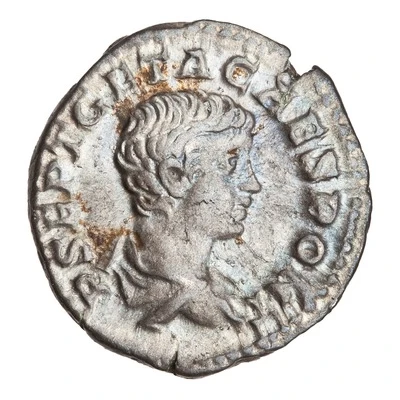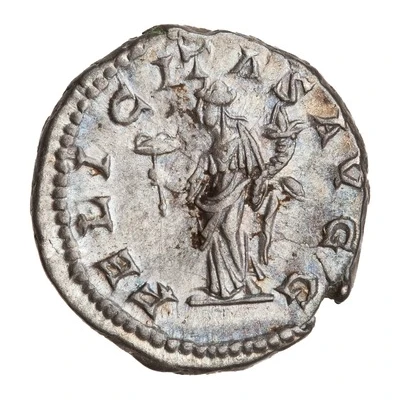


© American Numismatic Society (ANS)
Denarius - Geta CASTOR; Castor
| Silver | 3.3 g | 18.5 mm |
| Issuer | Rome › Roman Empire (27 BC - 395 AD) |
|---|---|
| Emperor | Geta (Publius Septimius Geta) (209-211) |
| Type | Standard circulation coin |
| Years | 200-202 |
| Value | 1 Denarius |
| Currency | Denarius, Reform of Augustus (27 BC – AD 215) |
| Composition | Silver |
| Weight | 3.3 g |
| Diameter | 18.5 mm |
| Shape | Round (irregular) |
| Technique | Hammered |
| Orientation | Variable alignment ↺ |
| Demonetized | Yes |
| Updated | 2024-10-05 |
| Numista | N#271601 |
|---|---|
| Rarity index | 95% |
Reverse
Castor, naked except for cloak, standing left in front of horse, which he holds by reins in right hand, and holding spear or sceptre in left hand.
Script: Latin
Lettering: CASTOR
Comment
Mass varies: 2.82–3.458 g;Diameter varies: 17.84–19 mm;
Example of this type:
American Numismatic Society (ANS)
Source:
Online Coins of the Roman Empire (OCRE)
Interesting fact
One interesting fact about the Denarius - Geta (CASTOR; Castor) coin is that it features the image of Castor, a mythological figure who was worshipped as a god of horses and horsemanship in ancient Rome. The coin's design was likely meant to promote the Roman Empire's association with Greek mythology and culture, as Castor was a prominent figure in Greek mythology as well.

